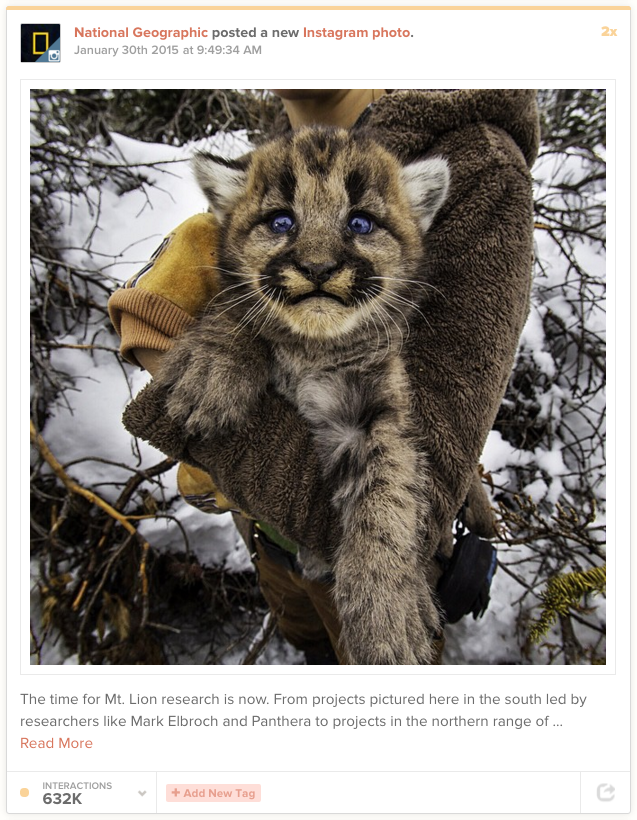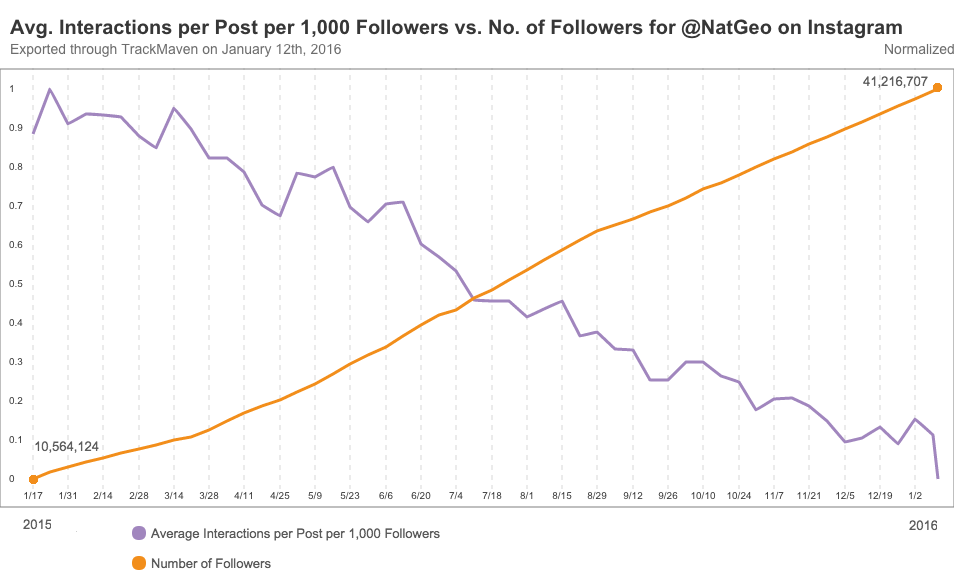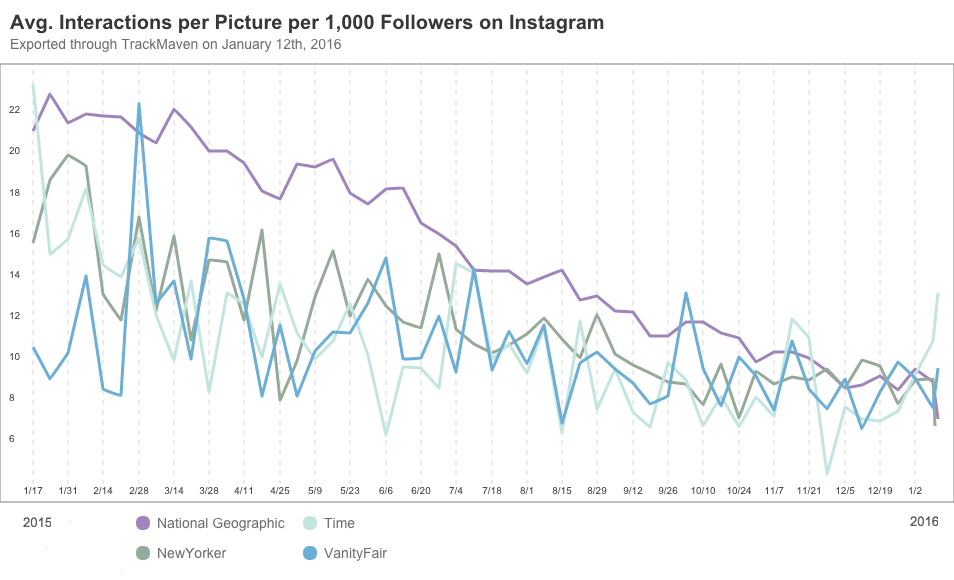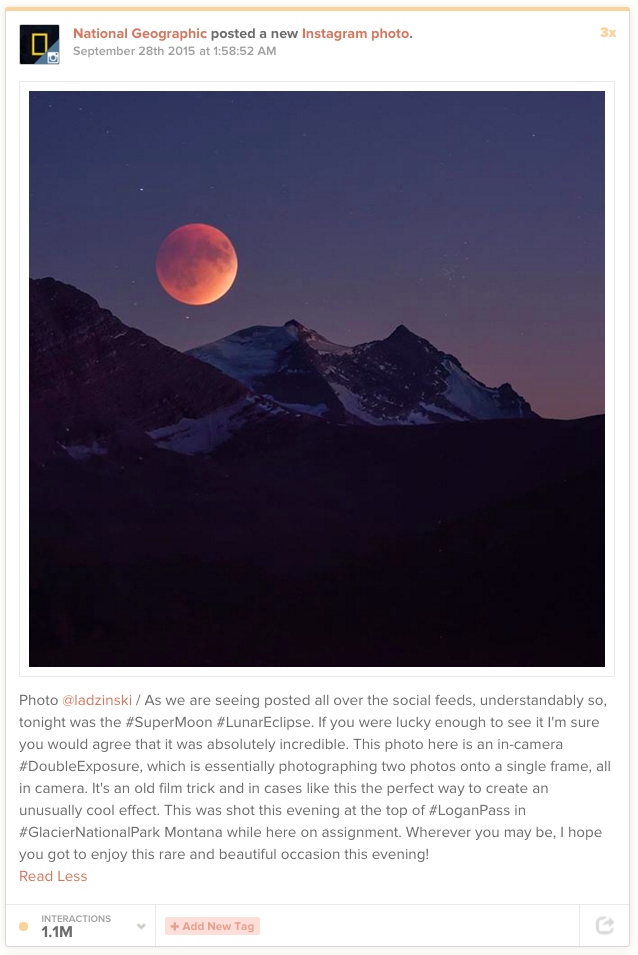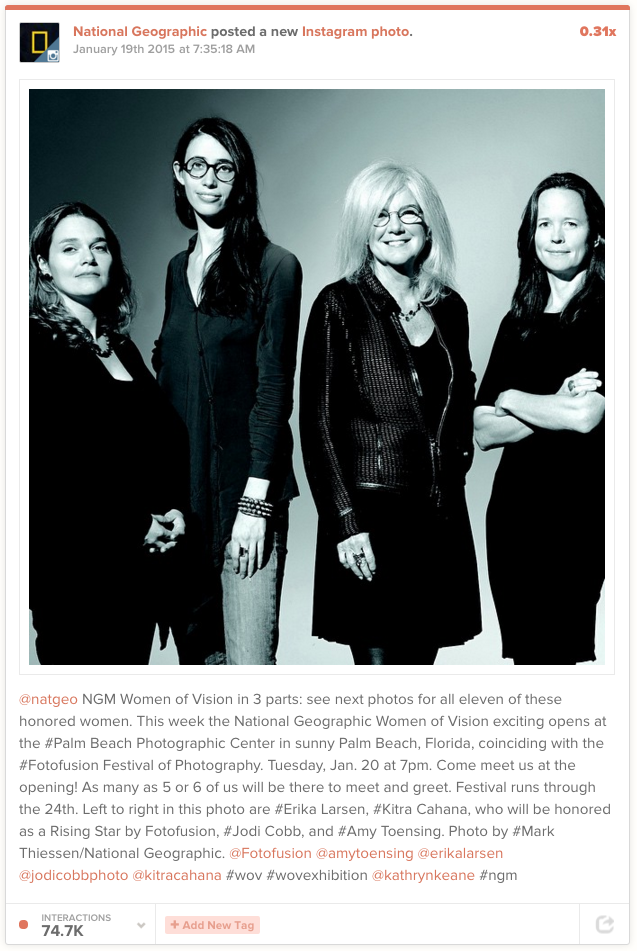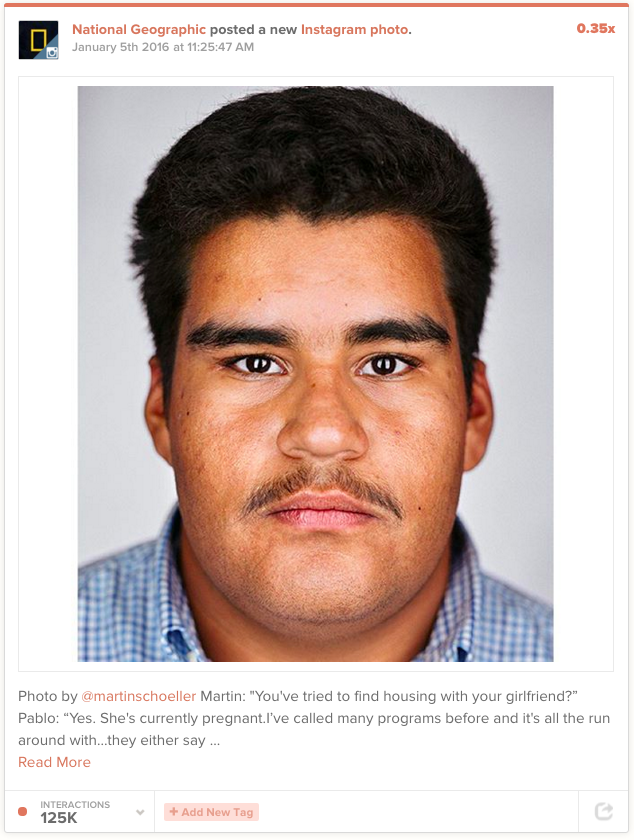Instagram is a growing social network with high engagement opportunities for brands looking to further develop relationships with their customers and audiences. The social platform has over 400 million active monthly users who post more than 80 million photos per day. So what can we learn from a brand with one of the biggest audiences on Instagram, National Geographic?
You might best know National Geographic’s Instagram account for posts like this one, which takes cute cat photos to a whole new level:
What you really need to know is that @natgeo is the top non-celebrity account on Instagram (besides the main Instagram account) with over 41.2 million followers. In the past year, it has published over 4,400 posts, amassing more than 1.5 billion likes and 13.7 million comments. The organization has four other accounts on Instagram, including: @natgeotravel, @natgeochannel, @natgeoadventure, and @natgeoyourshot.
It could be easy to dismiss National Geographic’s success on Instagram as a natural byproduct of their history as pioneers in photojournalism (and for their use of adorable baby animal photos). However, @natgeo presents key lessons for marketers on how to create impactful posts for Instagram.
Lesson 1: As more content is posted on Instagram, the impact of that content is decreasing
Our content marketing paradox describes the rising challenge marketers face as the increased number of digital channels has led to more information and content being distributed, which in turns has led to content overload for users and less impactful content for marketers.
National Geographic’s Instagram account reflects this trend. As the number of followers has grown, and as the number of users posting to Instagram has also grown, engagement with posts has decreased over the past year (videos were not included in this analysis, because they were neither the most nor the least impactful, and they accounted for around 90 out of 4,400 posts):
This trend can likely be applied to most brands.
Lesson 2: Average post engagement for several publishers on Instagram have converged
From a content standpoint, magazines and publishers have what many companies aim to achieve. It’s important to learn how content marketing trends are affecting these benchmark brands. In this graph, I used TrackMaven to compare the average interactions per picture per 1,000 followers on Instagram posted by National Geographic, The New Yorker, Time, and Vanity Fair:
As you can see, the average engagement per post for these four magazines has decreased for all except Vanity Fair, which has stayed relatively the same. The engagement for posts by Time and The New Yorker quickly decreased to their current, if somewhat erratic, average, while National Geographic has slowly decreased throughout the year.
Lesson 3: Use appealing visuals, demonstrate your unique insight, and provide expert tips
The picture with the highest impact (an impact score is relative to the 30 days prior to when the post was published) from National Geographic’s Instagram account over the past year is a photo of a Lunar Eclipse in Glacier National Park, Montana, with a description by the photographer of both the subject matter and how the photo was taken:
This post receive about 2.8 times the average impact and has 1,134,262 and 12,549 comments. It is a prime example of National Geographic’s greatest strengths: its incredible network of talented journalists and photographers all over the world, strong narrative providing insight into the subject matter, and beautiful photography, all stemming from a long history of being an innovator in the field of photojournalism. Finding appealing visuals, demonstrating your unique insight into the subject matter, and providing followers with tips related to that visual can illustrate your company’s expertise.
Lesson 4: Instagram posts should focus on interesting images that catch the attention of followers, not just quality photos
Two series of photos are at the bottom of the list for relative impact of Instagram content for NatGeo, and both both feature photos of people. One campaign is of women who are a part of NGM’s Women of Vision, and this particular post received 74,691 likes and 275 comments, with a relative impact of 0.31:
The others are from a recent campaign with posts by photographer Martin Schoeller in support of a fundraising initiative to help purchase facilities for the Greater West Hollywood Food Coalition (GWHFC)—a volunteer-run organization which serves the homeless—consisting of profile shots of people GWHFC helps along with a short interview between them and Schoeller. This post received 125,433 likes, 3,138 comments, and had an impact of 0.35 the average:
The goals of these campaigns may have been to raise awareness of NGM’s Women of Vision and to support GWHFC, and not necessarily to achieve the highest engagement, but low engagement for these posts teaches us important lessons.
Sharable content on Instagram is focused on interesting images and videos that catch the attention of followers and which are intriguing and entertaining. While the pictures in these posts are beautiful, profile shots of individuals who do not have famous faces may not be the best way to engage followers. Photos of individuals in an interesting place, featuring interesting dress, or doing something interesting might have been a better way to feature the people in these campaigns in order to attain higher relative impact.
What we learned from National Geographic’s Instagram success
It might be easy to dismiss National Geographic’s success on Instagram as a product of their historical use of photojournalism and their unparalleled resources for inspiring and educational imagery. But marketers can learn from their use of sharable content and investment in a fast-growing platform.
What are your thoughts on this? We want to hear from you! Tweet your comments at @TrackMaven or email me at rebecca.white@trackmaven.com.
